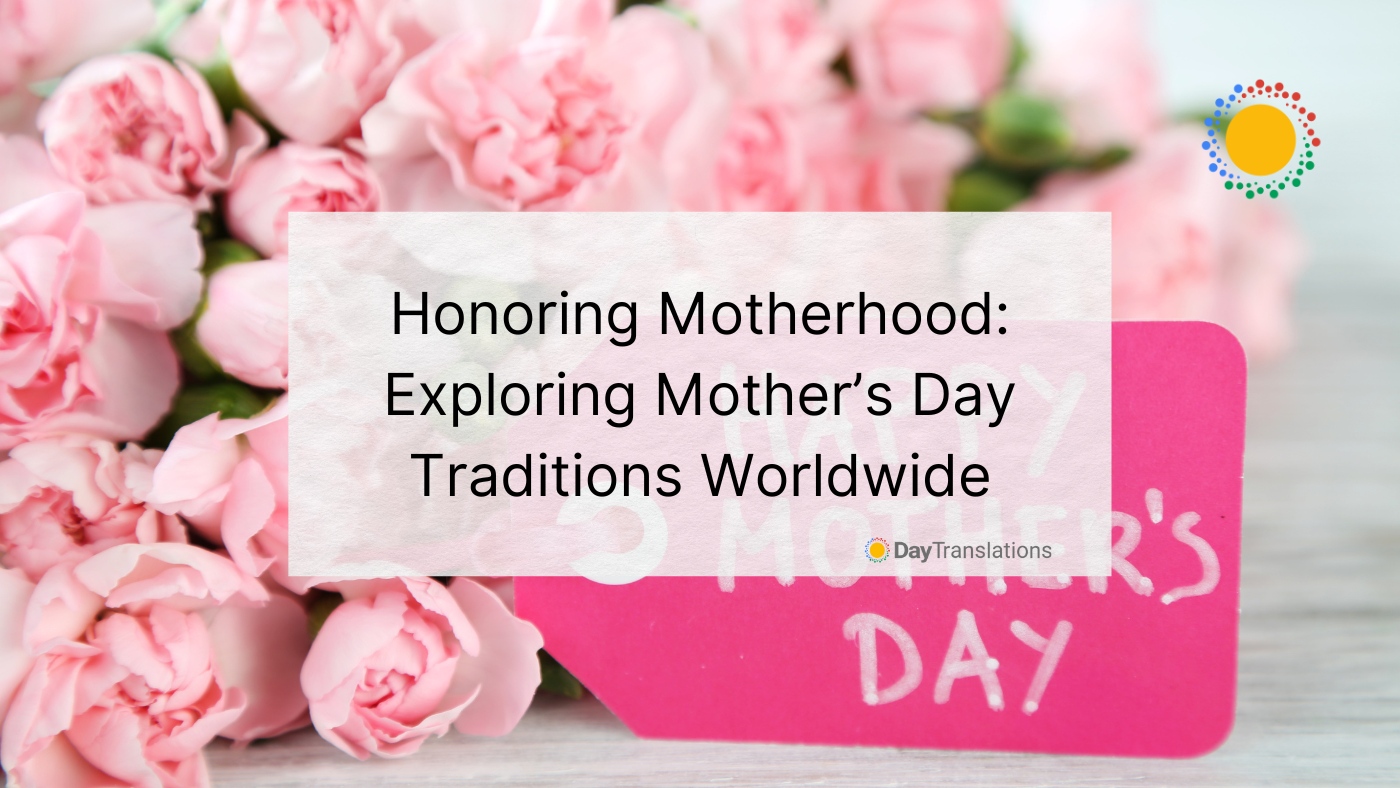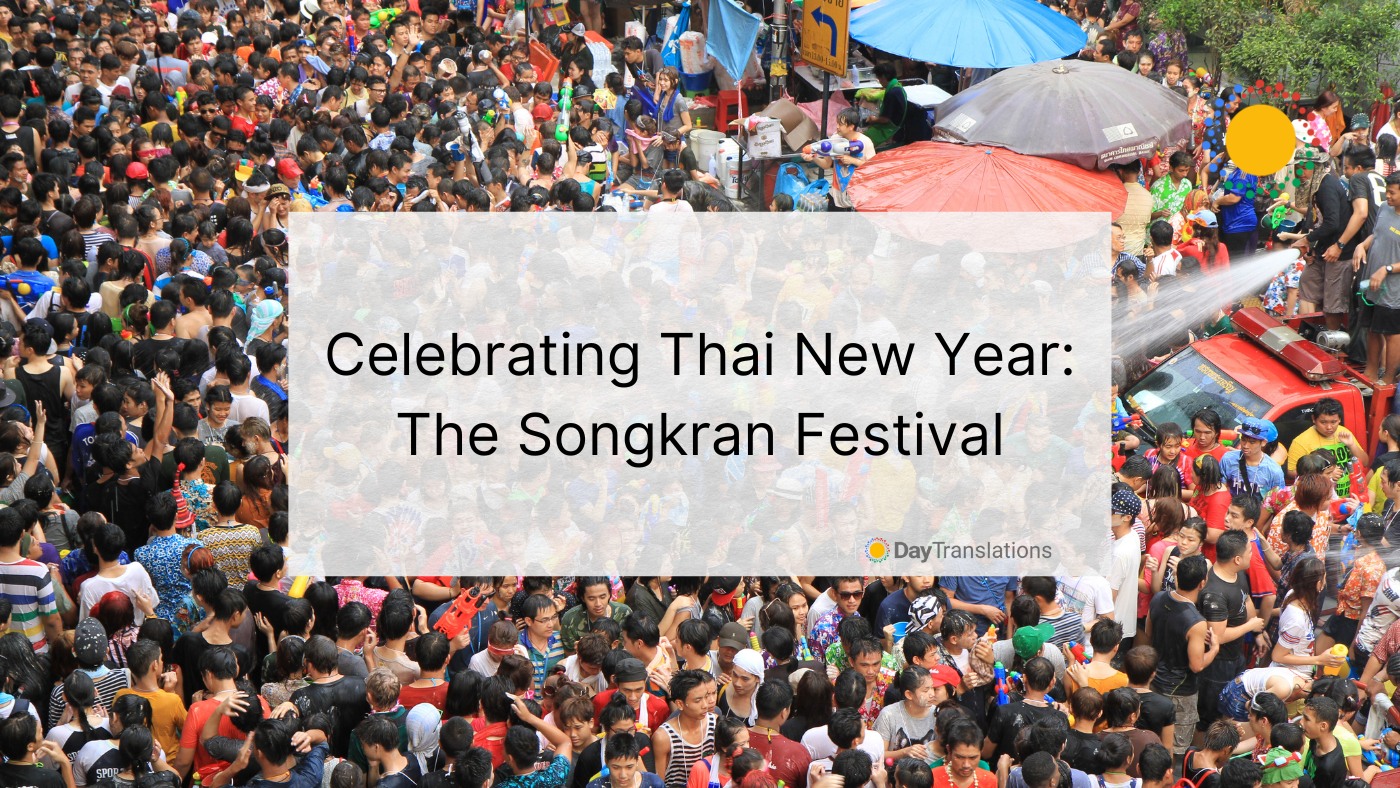As families across the globe prepare for Mother’s Day traditions and celebrations, it’s important to recognize that this annual tradition extends far beyond the borders of the United States. Numerous countries have their own unique ways of honoring mothers, going beyond the customary gifts of flowers, chocolates, and tokens of appreciation when it comes to Mother’s Day traditions.
Modern Mother’s Day has evolved over time, blending cultural and religious traditions to create diverse and meaningful celebrations of motherhood. While approximately 40 countries worldwide commemorate this special day, the specific dates may vary. In many nations, the observance of this special day has been influenced by American Mother’s Day traditions, while others combine these influences with their own distinct practices.
Join the Day Translations blog as we take a closer look at how some countries around the world pay tribute to their mothers on this significant day!
Most Memorable Mother’s Day Traditions Around the World
France
French Mother’s Day, known as “fêtes des mères,” falls on the fourth or last Sunday of May, except when it coincides with Pentecost. In such cases, the official holiday is moved to the following Sunday. The celebration closely follows American customs, with families expressing their love and gratitude by exchanging flowers, cards, and intimate family dinners. In addition, young children often lend a hand with household chores and present their mothers with heartfelt handwritten poems.
China
Although the concept of Mother’s Day is relatively new in China, the virtue of filial piety has been deeply ingrained in its cultural heritage for generations. China now celebrates Mother’s Day on the second Sunday of May, in sync with many other countries. Families seize the opportunity to honor their mothers by offering gifts and engaging in various activities that promote bonding within the family unit.
The U.K.
Mothering Sunday, a tradition from the 16th century, is observed in the United Kingdom. The tradition began in the 1500s and saw people taking the day off work and returning to the church they were baptized in, called their mother church, to spend the day with their family members. The modern-day celebration takes place on Lent’s fourth Sunday, typically in the middle of March. While gifts and cards are commonly given to celebrate mothers, some families continue the tradition of presenting their mothers with a Simnel cake—a rich fruitcake adorned with marzipan.
Mexico
Known for its vibrant festivities, Mexico treats Mother’s Day as a significant holiday. Restaurants, flower vendors, and mariachi singers join in the preparations for this special occasion. In rural areas, mothers are serenaded early in the morning in front of their homes, while in urban centers, mariachis delight mothers dining in restaurants or attending special parties. Traditional songs such as “Las Mañanitas” and “Amor de Madre” fill the air, adding to the joyful atmosphere of gift giving.
Japan
In Japan, Mother’s Day was initially known as “Haha no Hi,” a celebration of Empress Koujun’s birthday. However, the modern version of Mother’s Day is now observed on the second Sunday of May. Daughters and sons traditionally present their mothers with carnations, as these traditional Mother’s Day flower gifts symbolize a mother’s gentle strength and unconditional love.
Germany
Muttertag, as Mother’s Day is called in Germany, is celebrated on the second Sunday of May, unless it coincides with Pentecost. During World War II, mothers were honored with medals for contributing to the growth of the Fatherland’s population. Mother’s Day in Germany is marked by the exchange of flowers, gifts, and cards, demonstrating appreciation for mothers’ roles in society.
Australia
Down Under, Mother’s Day is observed on the second Sunday of May, aligning with the global celebration. Carnations and chrysanthemums are popular floral choices to express love and admiration for mothers. Australians also extend the celebration to include aunts and grandmothers, showering them with gifts and affection. Many organizations take the opportunity to organize various activities aimed at raising funds for women’s causes during Mother’s Day. This collective effort adds a philanthropic dimension to the occasion, emphasizing the importance of supporting and empowering women in society.
Peru
In Peru, Mother’s Day is celebrated in May, similar to other countries. Peruvian children cherish their mothers by offering chocolates, organizing family meals, and crafting heartfelt handmade gifts. Interestingly, mothers also participate in the celebration by reciprocating the gesture and giving gifts to their children, symbolizing the mutual love and appreciation shared between parent and child. In Peru, the indigenous Andean people also celebrates Mother Earth, known as Pachamama, in early August each year.
Brazil
Mother’s Day, or “Dia das Mães,” is observed on the second Sunday of May in Brazil and is one of the most commercialized holidays in the country. The day begins with attending mass, followed by special performances by children to honor their mothers. Barbecue parties, attended by extended multigenerational families, are a popular way to celebrate and spend quality time together.
Other Countries: Cultural Differentiations in Celebrating Mother’s Day
Many other countries worldwide celebrate Mother’s Day on different dates. Regardless of the specific day, the essence of the celebration remains consistent across cultures—expressing gratitude, love, and admiration for mothers through gestures such as sharing meals, exchanging gifts, and presenting flowers.
Russia
It’s worth noting that in the former Soviet Union, Mother’s Day was commemorated during the celebration of International Women’s Day. However, since 1998, Russia has adopted the last Sunday of November as its designated day to honor mothers.
Arab Nations
Similarly, in many Arab countries, including Egypt, the day is celebrated on March 21, coinciding with the beginning of spring—an occasion that signifies renewal and new beginnings.
Thailand
Thailand observes Mother’s Day during the birthday of Queen Sirikit on August 12. On this day, children show their respect and gratitude by welcoming their mothers to school, where special ceremonies are held, often culminating in a touching moment where children kneel before their mothers, symbolizing deep reverence and appreciation.
Ethiopia
In Ethiopia, Mother’s Day coincides with the end of the rainy season, signifying a time of abundance and growth. It serves as a moment to honor mothers and express gratitude for their nurturing and care.
Serbia
Serbia takes a unique approach by celebrating the special day in December, along with Father’s Day and Children’s Day. This month of collective celebration emphasizes the importance of family and the interconnectedness of parental and filial bonds.
Wrapping Up Mother’s Day Traditions Across the World
Wherever one may find themselves in the world, Mother’s Day provides an opportunity to honor the remarkable women who have played a crucial role in our lives. Regardless of the name or specific customs associated with the occasion, expressing love, appreciation, and gratitude to the person we call Mother transcends cultural boundaries. So, please take a moment to reflect on mothers’ immense impact on our lives and let them know how much they are cherished and valued.














Sorry, the comment form is closed at this time.